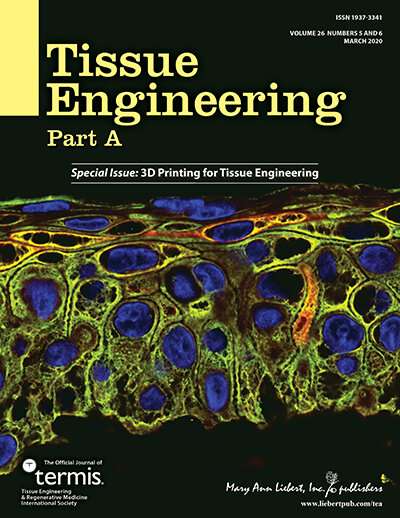Credit: Mary Ann Liebert, Inc., publishers
Spinal cord injury (SCI) creates a complex microenvironment that is not conducive to repair; growth factors are in short supply, whereas factors that inhibit regeneration are plentiful. In a new report, researchers have developed a structural bridge material that simultaneously stimulates IL-10 and NT-3 expression using a single bi-cistronic vector to alter the microenvironment and enhance repair. The article is reported in Tissue Engineering.
In "Polycistronic Delivery of IL-10 and NT-3 Promotes Oligodendrocyte Myelination and Functional Recovery in a Mouse Spinal Cord Injury Model," Lonnie D. Shea, Ph.D., University of Michigan, and coauthors report the development of a new poly(lactide-co-glycolide) (PLG) bridge with an incorporated polycistronic IL-3/NT-3 lentiviral construct. This material was used to stimulate repair in a mouse SCI model. IL-10 was included to successfully stimulate a regenerative phenotype in recruited macrophages, while NT-3 was used to promote axonal survival and elongation. The combined expression was successful; axonal density and myelination were increased, and locomotor functional recovery in mice was improved.
"Inflammation plays a vital role in tissue repair and regeneration, and the use of a PLG bridge to take advantage of the inflammatory response to promote SCI repair is an elegant way to take advantage of these natural processes to improve SCI healing," says Tissue Engineering Co-Editor-in-Chief Antonios G. Mikos, Ph.D., Louis Calder Professor at Rice University, Houston, TX.
More information: Dominique R. Smith et al, Polycistronic Delivery of IL-10 and NT-3 Promotes Oligodendrocyte Myelination and Functional Recovery in a Mouse Spinal Cord Injury Model, Tissue Engineering Part A (2020). DOI: 10.1089/ten.tea.2019.0321
Provided by Mary Ann Liebert, Inc
























